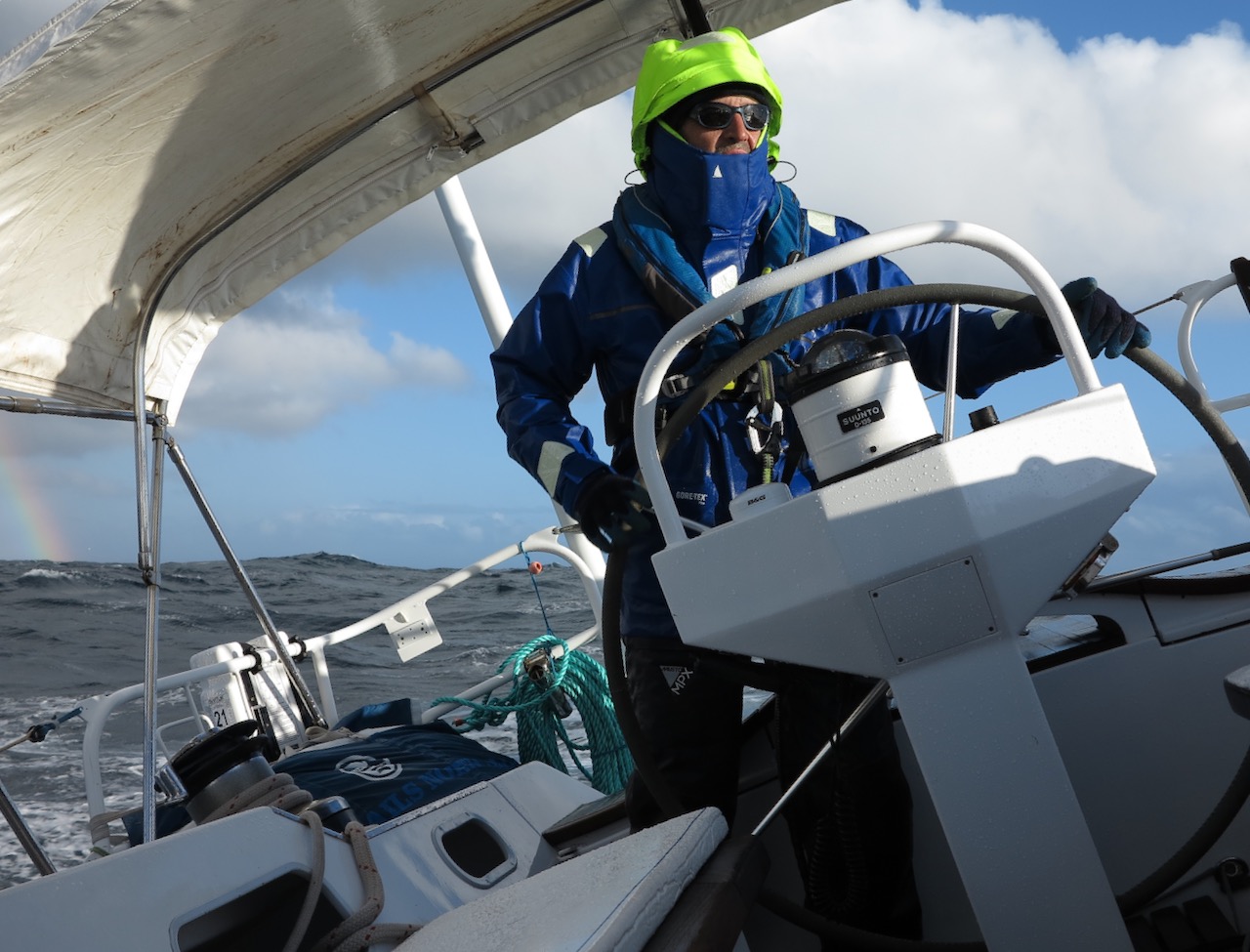SAM, a custom 1990 fixed keel Garcia 48-foot aluminum cutter, passed Cape Flattery, Washington in early September after a 13,000 mile loop of the North Pacific from San Francisco and Baja California onward to the Hawaiian Islands, Dutch Harbor and then to Kodiak Island, Juneau, Haida Gwaii and western Vancouver Island.
Along the way, SAM’s owner and captain Peter Molnar and a crew of over twenty (anchored by Jeff Svihus, Tyler Meade, Matt Stromberg and Molnar’s teenage son Gabriel) collected, classified and stabilized many thousands of planktonic organisms to support the groundbreaking research of Dr. Leonid Moroz, a distinguished Professor of Neuroscience, Genetics, Biology and Chemistry at the University of Florida and the Whitney Laboratory for Marine Sciences. Originally introduced to Dr. Moroz by The International Seakeepers Society, the team conducted one of the longest citizen science voyages on record.
“SAM is a remarkable vessel. We had our share of storms with conditions up to 45 knots on the way to the Aleutians, numerous rocky coves and intricate navigation and we did not have a single significant rig, gear or safety incident. It’s just a whole different experience when you have such a solid boat under you.”

Molnar credits the design and build quality as well as the full refurbishment by former owner and Whitbread winner Tom Alexander as well as rigging by Hansen Rigging, sails by North Sails and a full electronics and communication upgrade by Farallon Electronics and Dustin Fox.
“And we had a ton of fun – hitting 20 knots twice off Cabo San Lucas and the Alenuiha’ha channel — SAM is pretty slippery for a fully loaded expedition vessel.”
The long passages afforded extraordinary sightings of wildlife including humpbacks, orcas as well as a good-sized grizzly that checked out the crew from the beach on Unimak Island in the Aleutians. Long discussions on watch with Dr. Moroz were a real time seminar on evolution, biodiversity and the reality that we still know so little about the life of the oceans which cover 70% of our planet.
“While sailing the North Pacific and exploring the diverse coasts of desert, tropics, ice and rainforests climes is already amazing, expanding our knowledge of the incredible biodiversity of our oceans is the true adventure.”

Inspired by Dr. Moroz and other scientists, SAM’s core crew established the Ocean Genome Atlas Project (OGAP), a science non-profit based in the Presidio of San Francisco. OGAP is placing cutting edge genomic laboratories on SAM and other vessels and is designing a 77-foot Sailing Research Vessel (SRV) to create a high-resolution genomic atlas of the oceans available to scientist worldwide.
With this and other expeditions, OGAP aims to expand the frontier of biomedical fields opening conceptually new ways to decipher secrets of life in the ocean. On site documentation, observation, and genetic sequencing will dramatically increase our understanding of the physiology, evolutionary history, and spatial biodiversity of still elusive plankton, pelagic, and benthic species. This research is critical for our understanding of marine biological cycles, food webs, and even the development and regeneration of animal and human brains.
OGAP’s goal is to collect, classify, sequence and map the genomic information of organisms representing at least 80% of the extant marine species worldwide. Deploying a fleet of advanced but cost effective research vessels to transect our oceans over the coming decades, OGAP will allow access to all of our blue planet to hundreds of scientists. The resulting Ocean Genome Atlas will be a global 3D genomic atlas of the world’s oceans at single-cell resolution, providing critical information for planetary health, evolutionary and fundamental biology as well as biomedicines of the future. The Atlas will be a public database available to researchers and institutions across the globe. Time is of the essence given accelerating species extinction with estimates that 50% of existing biodiversity could vanish within a few generations.
OGAP has been selected by the National Academy of Sciences as a UN Ocean Shot Project. Ocean Shots are defined as an ambitious, transformational research concepts that draw inspiration and expertise from multiple disciplines and fundamentally advance ocean science for sustainable development
The searchable (query OGAP) can be found HERE.


2 thoughts on “Garcia 48, SAM, Completes Research Expedition of the North Pacific”
This is the best boat for adventure I have ever sailed on given its passage making ability with a crew of two. SAM works in the tropics and gets you from there to the icefields in safety and comfort. SAM has another incredible advantage, an amazing skipper. The combination of Molnar and SAM paired with the Curiosity and Determination of Dr. Moroz will unlock endless mysteries of ocean life to the benefit of the planet. Sail On!!! OGAP for Knowledge.
On a strictly sailing geek note of bucket list things…..seeing the bow wake shoot up over the height of the deck (power boat style) as we hit 20kts …yah…I will never forget that.
Thanks Jeff, sounds fantastic!